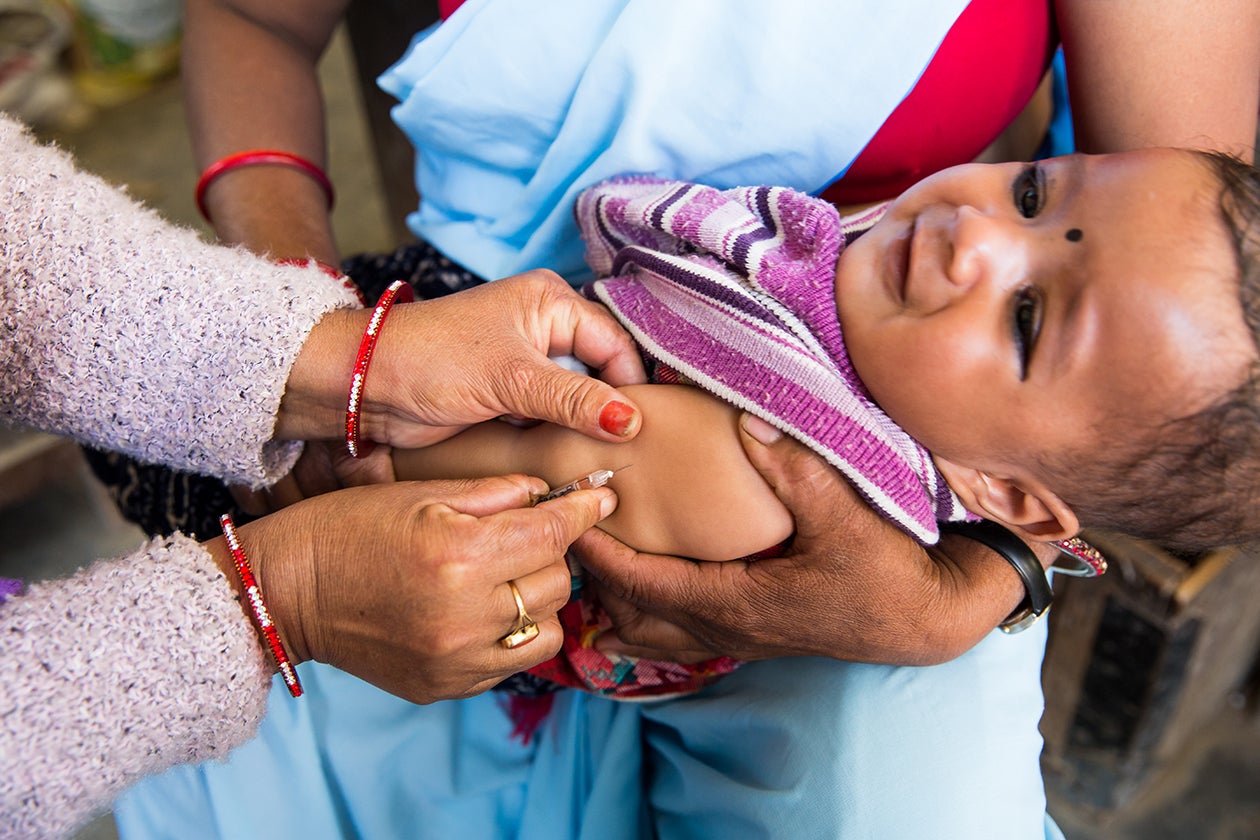Key Points
Despite a period characterized by political and civil unrest, Nepal achieved notable gains in the number of children who lived to see their fifth birthday.
Nepal experienced a decline of 53 percent in under-five mortality between 2000 and 2015—from 79 to 37 deaths per 1,000 live births, outpacing the South Asia regional average.
Nepal's success was based on four key success factors, namely 1) an embrace of community-based approaches, 2) strengthening of the health facilities network, 3) a consistent emphasis on neonatal health, and 4) the use of data and local research.

Nepal has achieved remarkable drops in under-five mortality, despite significant challenges such as a forbidding natural terrain, chronic political instability, an armed insurgency, and deeply entrenched social inequities.
From 2000 to 2015, the under-five mortality rate decreased from 79 deaths per 1,000 live births to 37 deaths per 1,000 live births, a decline of 53 percent.1 Nepal also attained significant declines in an especially difficult category of under-five mortality - deaths in the neonatal period, which the World Health Organization (WHO) defines as the first 28 days of life. Over this decade and a half, Nepal’s neonatal mortality rate declined from 39 deaths per 1,000 live births to 22 deaths per 1,000 live births, a 44 percent reduction.
Nepal’s reduction in the neonatal mortality rate outpaced that of South Asia as a whole, which saw a 36 percent decline (from 42 deaths per 1,000 in 2000 to 27 in 2015). This is a notable public health achievement—especially in the context of many other obstacles Nepal faced during this period (see figures below).
Nepal's reduction in under-five mortality was largely driven by reductions in the three largest causes of death: neonatal disorders, lower respiratory infections, and diarrheal diseases. A timeline of key policies and interventions that contributed to the reductions in under-five mortality is shown, along with the estimated reductions by cause of death.
Under-five mortality in Nepal over time, death rates per 100,000 children under five

Institute for Health Metrics and Evaluation (IHME). Global Burden of Disease Study (GBD 2017). Seattle, WA: IHME; 2018.
Under-five causes of death in Nepal over time, % of total U5M

Institute for Health Metrics and Evaluation (IHME). Global Burden of Disease Study (GBD 2017). Seattle, WA: IHME; 2018.
The interviews and research in Nepal identified four primary factors that have contributed to Nepal’s gains in reducing under-five mortality and the neonatal mortality rate:
- An embrace of community-based approaches, sustaining and building
upon a strong Female Community Health Volunteer (FCHV) program
- The strengthening of the health facilities network
- A consistent emphasis on neonatal health
- The use of data and local research
In addition to these four primary factors, improvements outside the traditional parameters of health policy—including women’s empowerment, economic development, and physical infrastructure improvements—were also frequently identified as major factors influencing Nepal’s under-five mortality and neonatal mortality rate outcomes.
Change in under-5 mortality rate versus change in GDP per capita

Under-five mortality rate, Nepal

Institute for Health Metrics and Evaluation (IHME). Global Burden of Disease Study (GBD 2017). Seattle, WA: IHME; 2018
